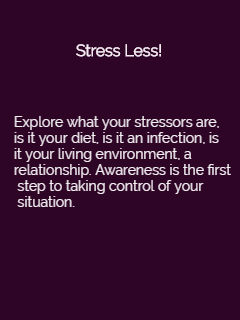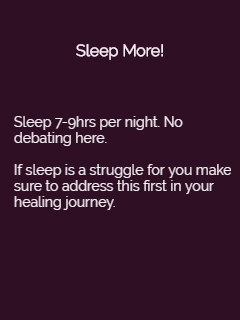AUTOIMMUNE DISEASE
If you are starting out in your autoimmune healing journey, or you are confused and overwhelmed by the interwebs interpretation of autoimmune disease then you are in the right place! Check out the summary below, and the actionable items at the end of the post!
The fatigue of autoimmune disease may in fact be like no other fatigue out there! If you are here, and either have an autoimmune disease or believe that you might, then I do not need to tell you how complex the medical literature is on this subject! Your search for answers has likely taken you into the depths of google, rummaging through blog posts, papers and books, trying to find information that will provide you with relief from your symptoms. You probably have also left this search feeling more confused and vulnerable then when you started! I hope to be able to provide some of that information, but first it is important to understand what is going on with your body!

You are not alone!
Autoimmune disease is said to affect approximately 2 million Canadians, although I do not think that number is an accurate reflection of those living with the disease. I believe there are a large number of undiagnosed people silently suffering. What is important to consider as well is that women are especially susceptible to autoimmune processes, with approximately 80% of cases occurring in women.
What is autoimmunity?
The first order of business is to define the difference between autoimmunity and autoimmune disease. Although these words get used interchangeably there is a significant distinction. Autoimmunity is the process in which your immune system confuses self (your cells) with non-self (bacteria, parasites, viruses, fungi etc) and creates antibodies against your own tissues. This happens in everyone, but not everyone gets an autoimmune disease. That is thanks to a gland called the thymus gland, our bone marrow, and a specific arm of our immune systems (T regulatory cells, Th3 and Tr1 cells) that work together to suppress immune cells looking to attack self-proteins. Now we don’t fully know why this system breaks down, it likely has to do with the processes listed below, but we do know that when it does, autoimmune disease can result.
Autoimmune disease is a progression from physiological autoimmune processes into pathological damage to our own tissues. This is where we start to see abnormal functioning of a tissue, then a system issue, and finally we will see symptoms and abnormal lab values. This attack can happen to any tissue in the body, and when an autoimmune disease starts in one tissue it is also likely to affect another if not treated.
It is clear that there are many complexities to the development of autoimmune disease but the current knowledge suggests three elements are required in order to develop an autoimmune disease.
- A genetic predisposition
- Gastrointestinal barrier dysfunction. This can be termed leaky gut, or intestinal hyperpermeability. Whichever way you slice it, the lining of your gut, which functions to keep the inside of your intestines out of contact with the inside of your body, fails.
- A trigger. This is the area in which the most investigative work must be completed! What was your trigger, or set of triggers? Below are some of the most common, and almost everyone can trace their autoimmune disease symptoms to a ‘never well since moment’.
Individual Triggers for Autoimmune Disease
- Gut infections or a period of prolonged, or strong antibiotic use. This could be a past infection, such as a streptococcal infection, H.pylori, herpesvirus (such as mono), norovirus etc or a lingering infection. The reason for this is believed to be two-fold. One, that the immune system is upregulated during these points and there is an increased risk of autoantibody formation. The second theory is that some of the infectious agents resemble human proteins and the immune system can get confused. In either case, many infections have been associated with specific autoimmune diseases.
- An Injury. Incidents such as a car accident, a fall or a sports injury.
- Hormone imbalance. As discussed above, autoimmune disease is much more common in women than men and this is likely due to the hormonal effects on the immune system. We know that levels of estrogen and progesterone, along with other hormones, can directly affect how our immune system responds to self, and non-self. Due to this autoimmune disease onset can commonly occur after a period of hormonal change such as puberty, pregnancy, menopause and other periods of pharmaceutical or lifestyle induced hormonal changes.
- Neurotransmitter imbalance. Stress, anxiety, mood dysregulation and sleep deprivation are among the many many things that have been associated with autoimmune disease and neurotransmitter imbalance. This area of the scientific literature is known as Neuroendoimmunology. I continually follow the research in this area as I believe it will give us significant insight in the coming years! (Yay, nerd party!)
- Environmental toxicity. We live in a toxic world! With hundreds of thousands of chemicals, additives, hormones and heavy metals permeating our daily lives it is literally impossible to avoid them. Dealing with them, without living in fear, and giving our immune systems the nutrients and support that it needs to cope is just about the best we can do. Rest assured, most of the time, this is enough, but in susceptible people the environment can trigger an immune system temper tantrum, and in those, autoimmune disease can be triggered.
In order to fully breakdown autoimmune disease I would need to write a whole book, and there are many out there, but these are some of the main areas that I explore when treating a patient with autoimmune disease. We will look at individual triggers, genetic predisposition and what could be the root causes of your dysfunction.
What each and every person can do to take control of their health is to work on four critical areas.
In order to take the next big step in your healing journey most people need to explore each of the following areas.




